-
 © FCA Heritage/Pininfarina
© FCA Heritage/Pininfarina -
 © FCA Heritage
© FCA Heritage -
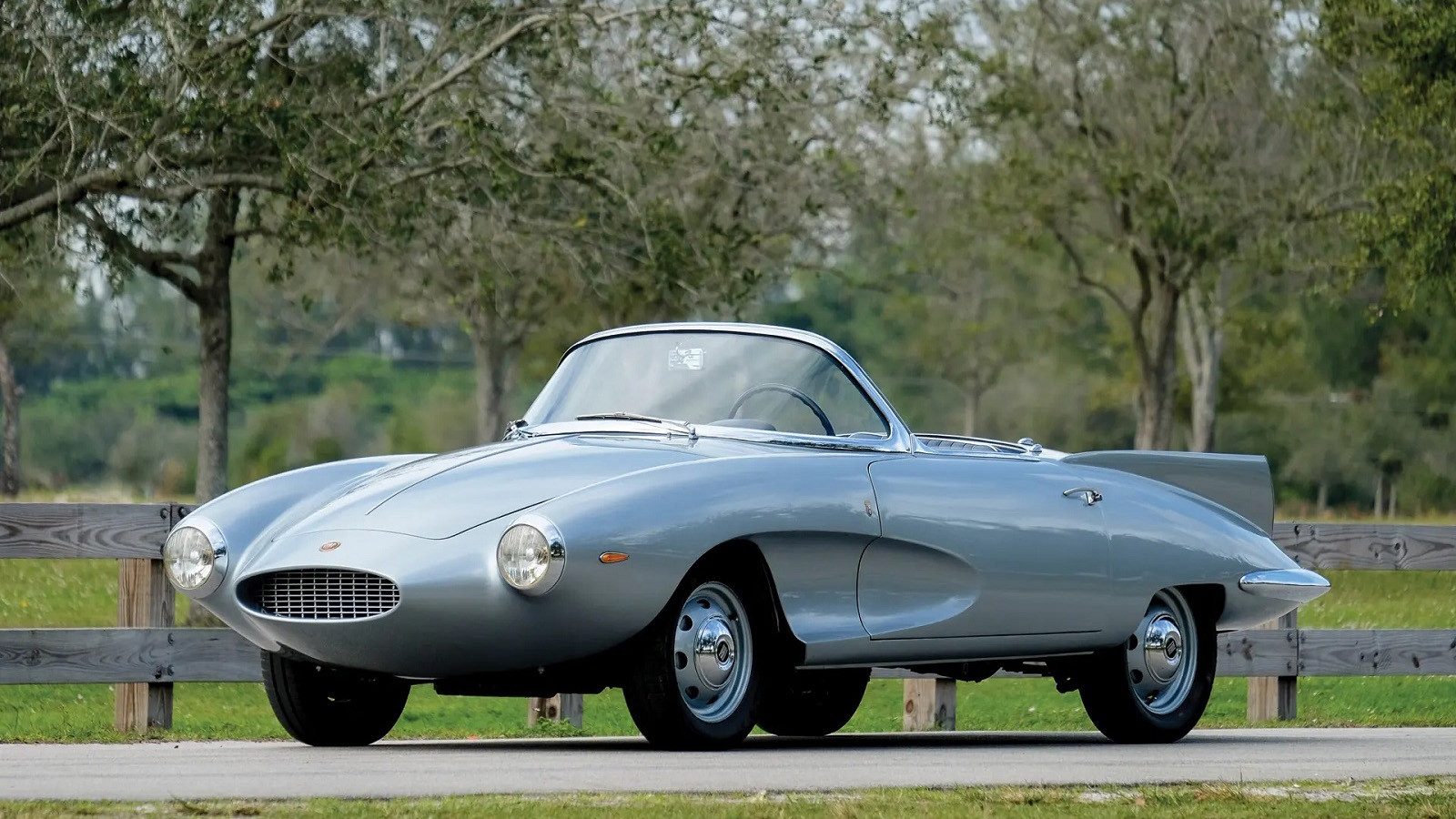 © Ryan Merrill/RM Sotheby’s
© Ryan Merrill/RM Sotheby’s -
 © FCA Heritage
© FCA Heritage -
 © FCA Heritage
© FCA Heritage -
 © FCA Heritage
© FCA Heritage -
 © FCA Heritage
© FCA Heritage -
 © FCA Heritage
© FCA Heritage -
 © FCA Heritage
© FCA Heritage -
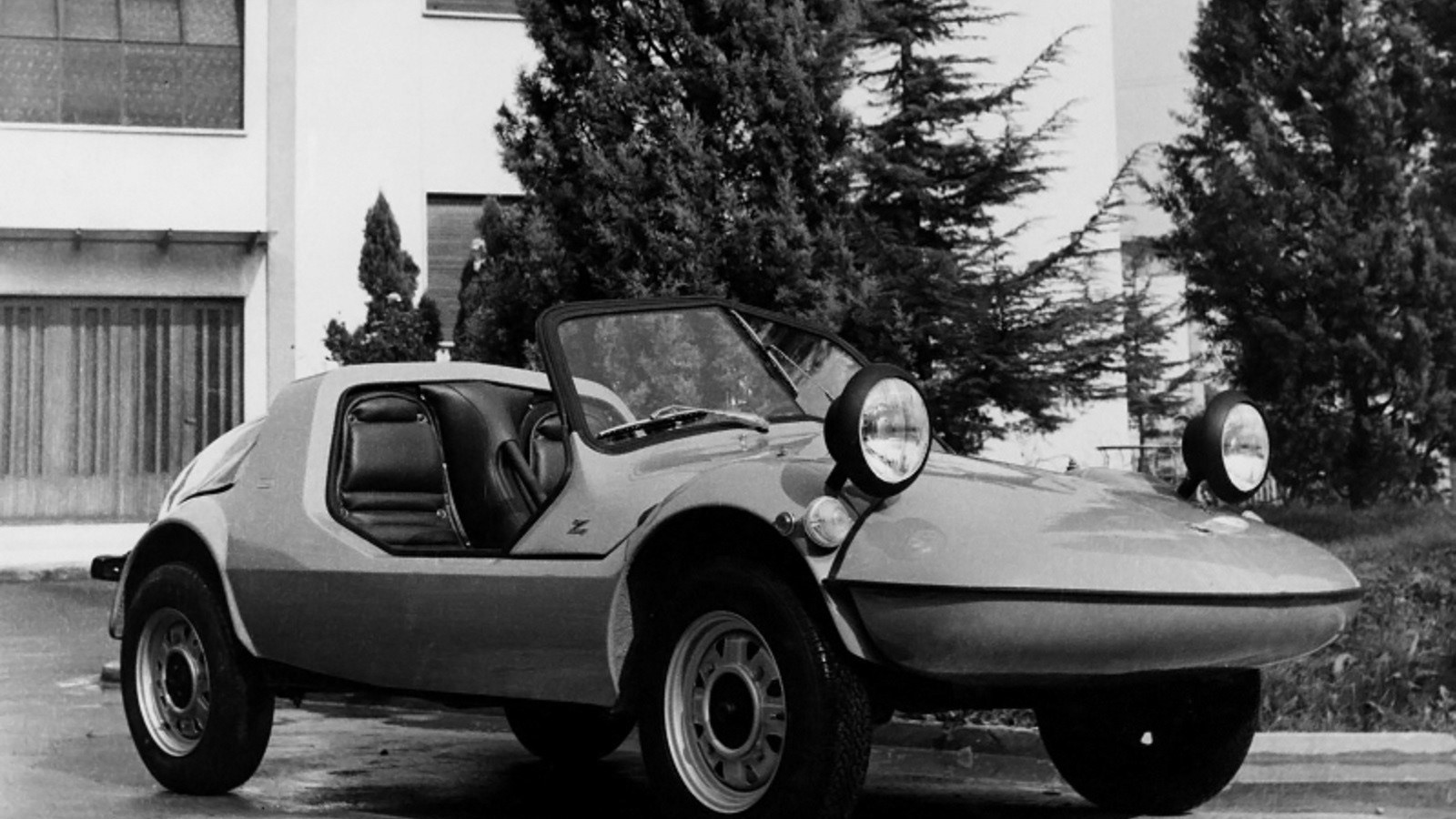 © Zagato
© Zagato -
 © FCA Heritage
© FCA Heritage -
 © FCA Heritage
© FCA Heritage -
 © FCA Heritage
© FCA Heritage -
 © FCA Heritage
© FCA Heritage -
 © FCA Heritage
© FCA Heritage -
 © FCA Heritage
© FCA Heritage -
 © FCA Heritage/Pininfarina
© FCA Heritage/Pininfarina -
 © FCA Heritage
© FCA Heritage -
 © FCA Heritage
© FCA Heritage -
 © FCA Heritage
© FCA Heritage -
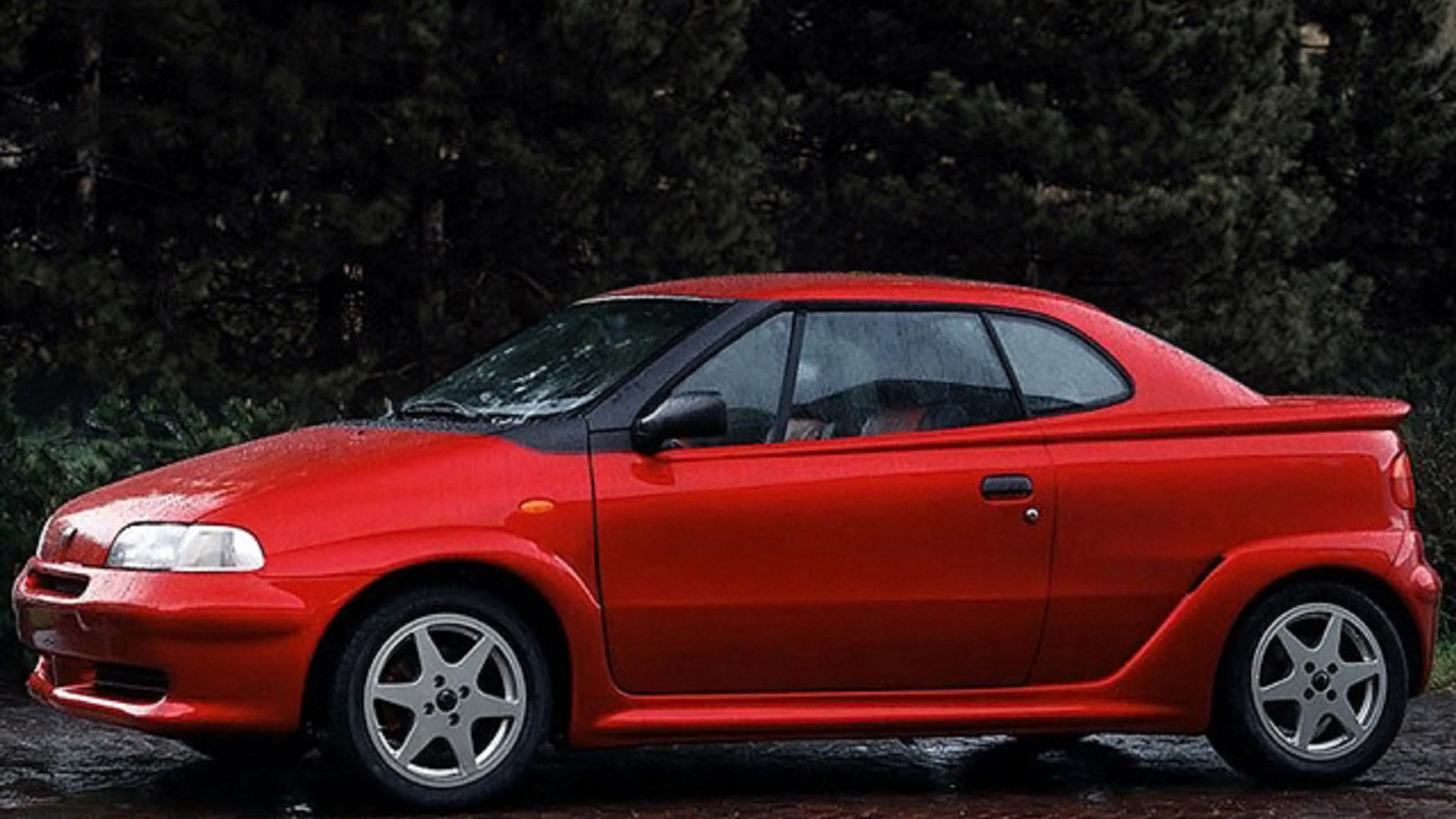 © Bertone
© Bertone -
 © Pininfarina
© Pininfarina -
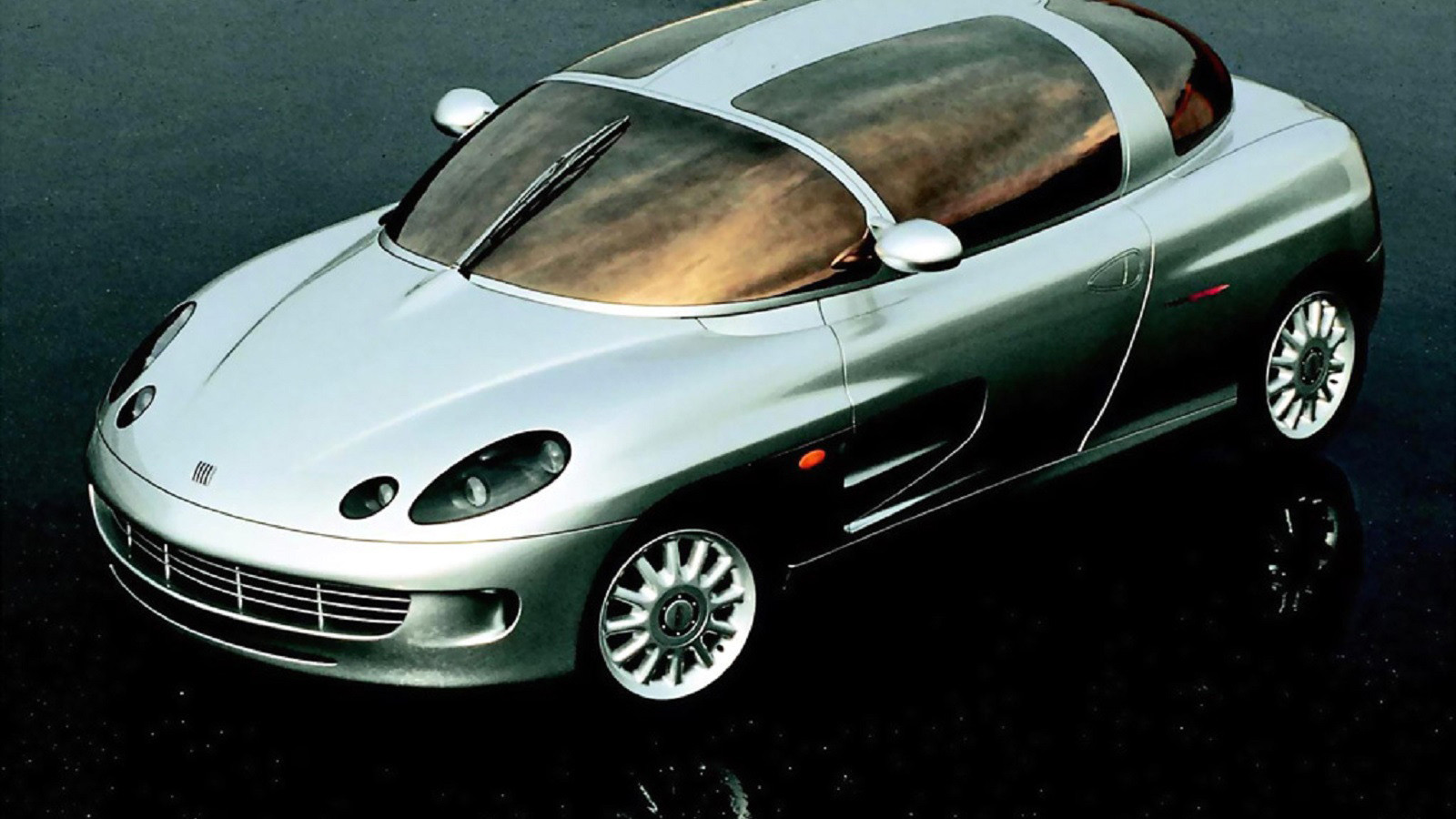 © ItalDesign
© ItalDesign -
 © ItalDesign
© ItalDesign -
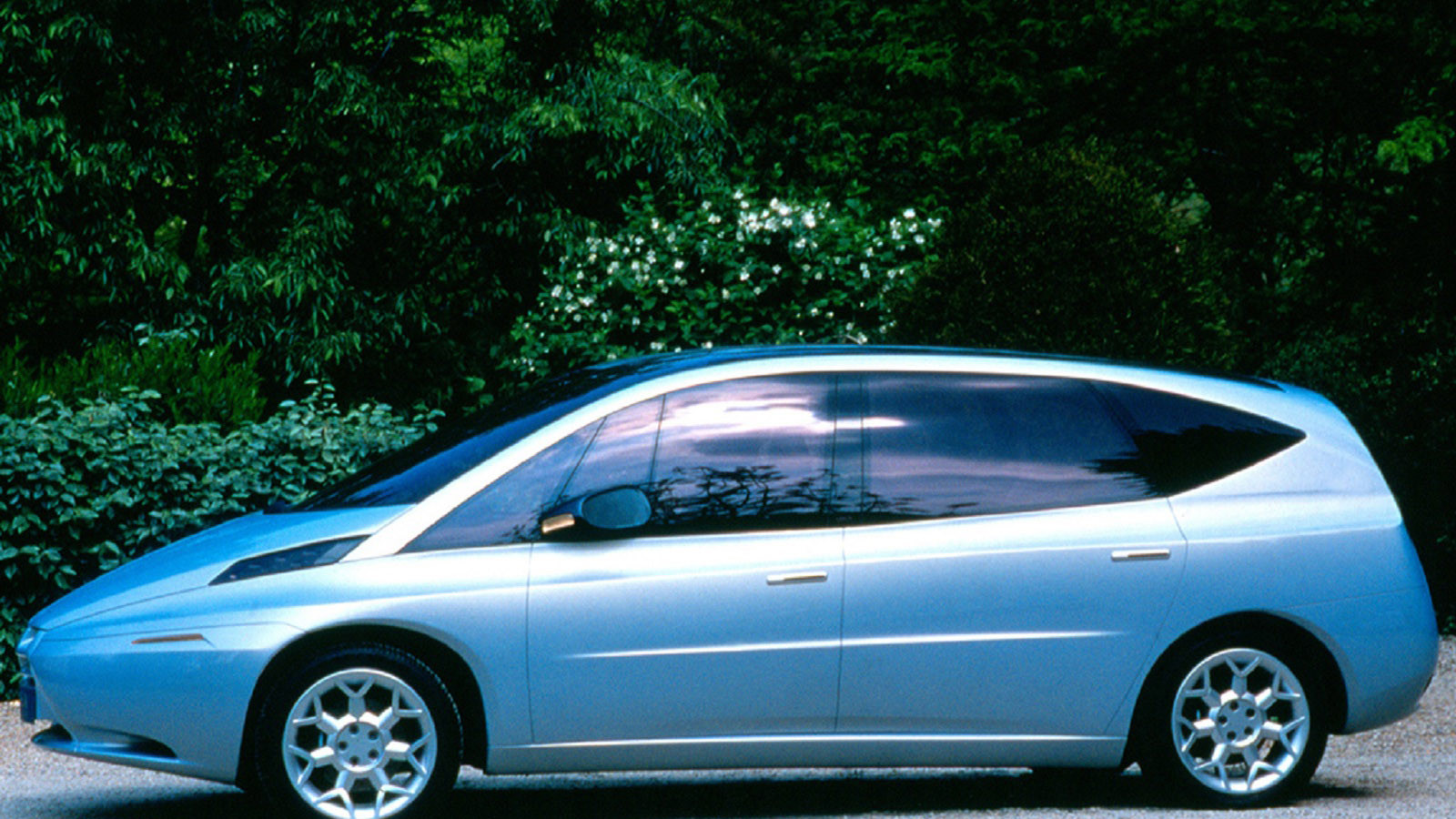 © I.DE.A
© I.DE.A -
 © FCA Heritage
© FCA Heritage -
 © FCA Heritage
© FCA Heritage
-
The cars Fiat never made
Fiat has had many big-selling cars, but it has also come up with more than its share of models that never made it into production.
From city cars to turbine-powered coupés, compact taxis and more, here we are giving those that didn’t quite make the cut with the Italian giant their moment in the spotlight.
Some faded without trace, while others had an influence on future design and engineering. A select few even went on to be sought-after coachbuilt rarities.
The cars are presented in chronological order.
-
1. 1954 Fiat Turbina
Revealed to the public at Turin airport with a demonstration drive, the Fiat Turbina was powered by a gas-turbine engine.
With a claimed 300bhp from the engine and very low-drag bodywork, the Turbina was reckoned to be capable of 160mph.
The mid-engined Turbina was designed by Luigi Rapi, with the engineering led by Dante Giacosa, who had witnessed the car’s first run on the rooftop track of the Lingotto factory a week before its public debut.
Its sleek coupé looks stirred up as much excitement about the Turbina as its engine and performance, but the car was shelved after six years of development work, because it was deemed too fuel inefficient to make production.
-
2. 1957 Fiat 1200 Stanguellini Spider America
This glamorous drop-top brought together many of the key names in Italian car building of the period to create the Fiat 1200 Stanguellini Spider America.
Based on a Fiat 1100 Touring Veloce that had its engine uprated by the factory to 1.2 litres, it was then further tuned by Stanguellini, which also improved the suspension for better handling.
The two-seat, open bodywork was styled by Franco Scaglione, who worked for Bertone, and the car made its premiere at the 1957 Turin motor show.
It was also displayed in Argentina the following year, where it’s thought the car was then sold.
It was later found in 1994 and restored to once again show what could have been.
-
3. 1962 Fiat 2300 S Cabriolet Ghia
Ghia had been in discussions with Fiat about a small series of 2300 S Cabriolet models from the Italian coachbuilder.
The talks went far enough for a brochure to be designed and printed, yet only three of these handsome convertibles were made.
The Ghia take on the 2300 open-top was aimed very much at the top of the market. It came with an electro-hydraulically operated roof and electric windows, to put it on a par with the most expensive cabriolet cars of the time.
Its style, luxury and performance marked out the 2300 S Cabriolet Ghia, but so did its considerable cost that spelled the end of any larger production run.
-
4. 1962 Fiat 2300 S Club
The trend for shooting-brake estates did not go unnoticed at Ghia, which proposed its 2300 S Club as a long-distance touring car.
The extended roofline and fastback styling meant the S Club could carry five people plus luggage, and Ghia even fitted seatbelts for everyone as an early nod to safety.
Practicality was aided in the S Club by a rear hatch that could be opened part-way to allow for longer loads to poke out of the back without the hatch fully raised.
However, such versatility was not enough to convince Fiat or Ghia to continue with the S Club and only two cars were built.
-
5. 1964 Fiat 2300 S Coupé Speciale Lausanne
This rakish coupé from Pininfarina took its name from the city where it was unveiled in Switzerland.
Following its first showing at the National Exhibition in Lausanne, the coupé became one of five bespoke cars from the Italian coachbuilder based on the Fiat 2300 S platform.
The styling was by Tom Tjaarda and bore more than a passing resemblance to his Chevrolet Corvair design study from the same year.
A cabriolet version with broadly similar styling was also proposed by Pininfarina – this car featured a targa-style roof that missed the elegant sweep of the Lausanne coupé’s rear window.
-
6. 1964 Fiat 2300 S Coupé Speciale V
With looks that could easily have graced a Ferrari of the period, the Fiat 2300 S Coupé Speciale V of 1964 was arguably one of Pininfarina’s finest moments.
Fared-in headlights helped give this smooth coupé clean lines, while the thin pillars gave an almost floating appearance to the roof.
First seen at the 1964 Turin show, the 2300 S Coupé Speciale V made minimal use of chrome detailing and the interior was also largely bespoke for this car.
While the 2300 S Coupé Speciale V did not make production, its style can be detected in the Fiat Samantha styled by Vignale and launched in 1968.
-
7. 1965 Fiat 2300 S Coupé Speciale
A year after the svelte Speciale V coupé had made its debut at the Turin motor show, Pininfarina was back with an altogether more modern take on its idea with the 1965 Fiat 2300 S Coupé Speciale.
A more angular variation on the theme of its five Fiat 2300 S coupés built in this period, the 1965 car had a reverse slope to its front end with quad headlights.
The rear was a departure from previous cars, too, with a very long boot deck and chromed bumper overriders that curved up to follow the slope of the rear lights and boot panel.
This pillarless coupé garnered plenty of attention at the motor show, but Fiat was much less enthused and it remained a concept.
-
8. 1968 Fiat City Taxi
Fiat reckoned a bespoke taxi was needed for Italian cities, much like those seen in London, UK, and the US. As a result, Pio Manzù was tasked with coming up with a compact car based on the Fiat 850.
The small footprint of the City Taxi did not prevent it from making the most of its interior space, thanks to a tall roof and the driver’s seat placed as far forward as possible.
Next to the driver was luggage storage, similar to a London FX4 taxi, plus a flip-down extra seat. Three could sit across the rear bench and access was through a large, sliding side door.
To make the driver’s life easier, there was an automated manual transmission that did away with the clutch pedal. However, not even this was enough to convince Fiat to put the City Taxi into production.
-
9. 1969 Fiat 500 Zanzara Zagato
A bit of a latecomer to the beach buggy style of car that proved popular in the 1960s, the Fiat 500 Zanzara Zagato mixed this style with scaled-down sports-car pretensions.
It was designed by Ercole Spada and used a Fiat 500 as its base. The bug-eyed headlights and simple two-piece windscreen were unlikely to garner much support from Fiat, especially when it had its own compact sports car waiting in the wings in the shape of the X1/9 styled by Bertone.
The one-off lime green Zanzara took its name from the Italian for mosquito.
-
10. 1969 Fiat Abarth 2000 Scorpione
As the wedge style of car design took hold in the late 1960s, Pininfarina seized the opportunity to build something that took this idea to an extreme.
The Fiat Abarth 2000 Scorpione was the result and was among the first cars to use this low-slung look.
An Abarth Sport Spider SE donated its chassis and fiery 2-litre engine – enough to propel the 670kg (1477lb) car to a claimed 175mph, thanks to its air-splitting shape.
Although the Scorpione was a running, driving car, Fiat was unmoved and details such as the flip-forward canopy in place of doors and six pop-up headlights were too impractical.
-
11. 1972 Fiat ESV 1500
When the US government announced its Experimental Safety Vehicle initiative in 1968, Fiat saw an opportunity and came up with its first ESV model, the 1500, in 1972.
Based on a Fiat 500, the ESV 1500 had the doors from a 126 with large rubber strips running the whole length of the sides of the car.
Huge rubber bumpers front and back helped absorb collision impacts and protected pedestrians.
A padded dashboard made the cabin safer in a crash and the ESV 1500 scored well in tests.
However, it was 100kg (220lb) heavier than the 680kg (1499lb) limit set out in the regulations and only 13 were made, most destroyed during crash testing.
-
12. 1973 Fiat ESV 2000
Following a similar line of thinking to the Fiat ESV 1500, the larger Experimental Safety Vehicle 2000 was a bigger, family-hatch-sized car aimed at meeting tough pedestrian and crash-safety targets.
While the ESV 2000, and its larger still ESV 2500 sibling, were far from pretty, they did have more coherent styling than the compact 1500.
The 1500 used the Fiat 128 as its base car and weighed a total of 1162kg (2562lb), which was too heavy for the rules laid down by the US government.
The result was the ESV 2000 and the other safety vehicles from Fiat didn’t go any further, but the large plastic bumpers of these cars were later seen on the Strada.
-
13. 1974 Fiat X1/23
Fiat had plenty of form with compact city cars, from its original Topolino to the huge-selling 500, but the X1/23 was a new take on the idea, because it used electric power.
With the oil crisis of the early 1970s in mind, Fiat explored electric propulsion with the X1/23 designed by Gian Paolo Boano.
The two-seater he came up with had an unusual egg-shaped profile to maximise cabin space in the tiny car.
A bank of batteries was housed behind the passenger compartment to power a motor that drove the front wheels.
This gave the X1/23 a top speed of 43mph, which was enough for running around the city, and it had a driving range of 31 miles on a full charge.
-
14. 1975 Fiat Visitors Bus
The clue to this minibus’ role in life is in its name – it was designed and built solely to transport visitors on tours of Fiat’s various factories.
Using the 850 T small van as a base, Fiat asked Bertone to style the Visitors Bus. There may have been no intention to put it into full production, but that didn’t stop Bertone coming up with a neatly styled, compact people carrier that could seat six in comfort.
The cab-forward design sat the driver on top of the front axle line to maximise interior space, and there were individual doors for each of the six occupants.
There was also a glass panel in the roof to offer an airy feel to the cabin and make it easier for guests to see the sights on a factory tour.
-
15. 1976 Fiat 126 Cavaletta
Following in the wheel tracks of the Fiat 500 Jolly beach car, the Italian company tried to revive the idea in 1976 with the 126-based Cavaletta.
Designed in-house by Fiat’s own styling department, the Cavaletta’s looks and frog-eye headlights missed the cute charm of the Jolly.
Fiat was confident enough in the design to show off the Cavaletta at the 1976 Turin motor show, but it got an unremitting thumbs down from the public and press alike, so never made production.
However, Fiat had gone as far as creating a full fabric roof and removable hardtop for the Cavaletta, so it’s possible the car was closer to potential production than the sole prototype made it seem.
-
16. 1978 Fiat Ecos
If the X1/23 compact electric car of 1974 did not make production, it didn’t put Fiat off the idea of battery-powered motoring.
The Ecos of 1978 was a more appealing prospect, thanks to its modern supermini looks and much roomier cabin.
Hints of the Fiat Panda were evident in the styling of the Ecos, and Fiat did eventually produce a Panda EV with the Elettra that was the world’s first mass-produced electric car.
Prior to that, the Ecos used a pack made up of 12 batteries to power a 30bhp motor driving the front wheels. This gave a 50mph top speed and 40-mile driving range.
Styled by Pininfarina, the Ecos made its debut at the 1978 Turin show, but little was heard of it after that.
-
17. 1981 Fiat VSS
You couldn’t accuse Fiat of lacking forward thinking when it commissioned the VSS.
The Vettura Sperimentale e Sottositemi (VSS) was an exploration in how to make cars more efficiently for the 1990s.
This was the first project for the Institute of Development of Automotive Engineering, better known as I.DE.A.
The VSS used the Ritmo (also known as Strada) as its base with plastic panels attached to the steel spaceframe. This allowed for a single base to be used for multiple different cars.
The idea of platform sharing was not new, but the VSS honed the idea and inspired future Fiat models such as the Tipo, Punto and Multipla.
-
18. 1993 Fiat Downton
The Downton was, in many ways, an updated take on Fiat’s X1/23 concept of 1974. Its compact size, compact cabin and electric power made the Downton very similar in its basic approach.
However, Fiat wanted to make a much more viable small electric car, so the Downton came with a three-seat interior, with the driver sitting centrally and the passengers angled to make the most of available space.
Two electric motors were used, one per rear wheel, with a combined 9.5bhp to give a top speed of 62mph and possible range of up to 185 miles on a full charge of the sodium-sulphate battery pack.
Three Downtons were built and all survive in Fiat’s Heritage HUB collection.
-
19. 1994 Fiat Lampo
When Fiat launched its Punto small hatch in 1994, it asked I.DE.A (Institute of Development of Automotive Engineering) to come up with a car on the same platform to grab some attention at the Turin show.
The resulting Lampo coupé was far better than Fiat had dared hope for.
The taut styling included details such as the headlights set into the bonnet edges and door windows as part of the larger side glass, similar to the Subaru SVX.
Aluminium was used for the Lampo’s body, and the car was slightly longer than the Punto it was based on.
However, Fiat had recently launched its Coupé and decided it didn’t need another in its line-up.
-
20. 1994 Fiat Punto Racer
Bertone was given the same brief by Fiat as the car giant had sent to I.DE.A to come up with a Punto-based coupé for the 1994 Turin show.
The Racer by Bertone was a much less sleek car than I.DE.A’s Lampo, but it was rooted more in production reality.
The Racer used a standard Punto front but with unique bodywork from the windscreen back.
However, underneath, the Racer used a near-standard Punto Cabriolet as its base and it came with a 133bhp Punto GT Turbo engine.
As relatively simple as it would have been to put the Bertone Punto Racer into production, Fiat shied away from this and stuck with the basic Punto line-up.
-
21. 1994 Fiat Spunto
Another of the Punto-based cars that Fiat commissioned for the 1994 Turin show is the Spunto from Pininfarina.
While the name might conjure up sporty notions, Pininfarina’s design was an early example of the leisure off-roader that became known as the SUV.
Rugged bumpers offered protection for venturing on to rough tracks, while raised ground clearance further helped.
There were clues to the Punto base underneath, such as the rear lights and windscreen, but Pininfarina did a very good job of disguising the humble Fiat.
Nothing came of the Spunto in the short term, but its chunky exterior appearance had an influence on the second-generation Fiat Panda 4x4’s looks.
-
22. 1994 ItalDesign Fiat Firepoint
ItalDesign went all out to impress when Fiat asked for the design firm’s take on the Punto for the 1994 Turin show.
Out went any thoughts of a supermini and in came a sleek 2+2 with domed roof glass, called the Firepoint.
The idea of the Firepoint’s radical styling was to make the most of its performance without the need to uprate the engine.
With greatly improved aerodynamics, the Firepoint’s looks were more like that of a fighter jet’s canopy.
To give the ItalDesign car further appeal, the large gullwing-opening side windows and rear glass were removable, to turn the car into a roadster.
Unsurprisingly, Fiat passed on taking this concept any further.
-
23. 1996 Fiat Formula Legram
ItalDesign came up with three cars for Fiat to display at the 1996 Turin show.
All three were part of a family called Formula and the Legram was by far the only one with a nod towards production reality.
The Formula Hammer and 4 concepts were fanciful open-top cars based on the Bravo/Brava platform. It was claimed to have an aerodynamic drag coefficient of just 0.255Cd, yet still with a front end that resembled the car it was based on.
The two-door, four-seat Legram coupé may not have seen the light of day, but its influence on the three-door Stilo hatch of 2001 was clear in its profile.
-
24. 1996 Fiat Vuscia
Given its dramatic looks, it’s strange to think the Fiat Vuscia was designed with production in mind rather than as a pure show car.
Styled by I.DE.A, the Vuscia used a Brava as its basis to create a six-seat MPV with sporty styling, which both the design firm and Fiat reckoned would open a niche in the burgeoning people-carrier market.
The wheelbase of the Brava was stretched by 200mm (8in) to give more passenger space, but the engines were stock Fiat units.
Access to the car was with a credit-card-style key that slotted into the doors, while solar panels on the roof helped fans to cool the interior.
In 2003, the Vuscia was rebranded as a concept car for Chinese company Changan and called the Jeixun.
-
25. 1996 Fiat Zicster
You don’t need to screw up your eyes too much to see clear similarities between the new Fiat 500 of 2007 and the Zicster that was shown at the 1996 Geneva motor show.
This small, two-seat city car was another step in Fiat’s road to developing electric cars and came with a 29bhp motor that would take the Zicster to a top speed of 62mph. Fully charged, it had a driving range of 143 miles.
The design used an aluminium spaceframe with composite body panels attached, which was a process that had been pioneered by the Fiat VSS in 1981.
While the Zicster did not see production, its fold-back roof that gave it the feel of a cabriolet in the cabin was repurposed for the 500C that arrived in 2009.
-
26. 1999 Fiat Ecobasic
While its appearance might suggest it was solely a concept, the Fiat Ecobasic was developed very much with production in mind.
It was engineered to meet the latest crash regulations of the day and spent a lot of time being honed in the wind tunnel to maximise fuel economy.
Despite the odd looks, Fiat was gambling on the Ecobasic pulling in customers with its low price and matching low running costs. It used a 1.2-litre turbodiesel engine to offer 80mpg.
Other quirky details for the Ecobasic comprised a single door on one side for the driver and two on the other side for passengers.
There was also a clear plastic panel at the front of the car to top up washer fluid, check the oil and charge the battery – an idea later seen on the Audi A2.
Fiat planned to sell the Ecobasic for just €5000 (£4300) and made 10 of them to gauge reaction. However, the buying public preferred to wait for the new Panda that arrived in 2003.
